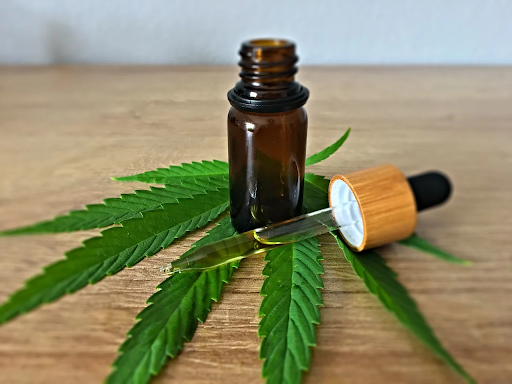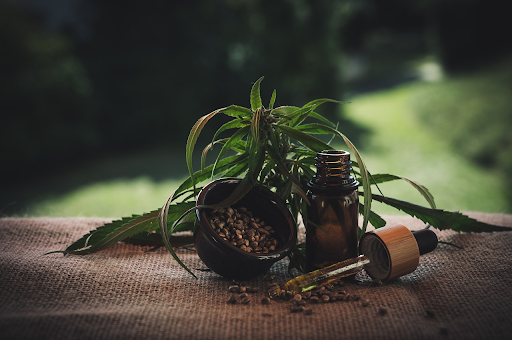The healthcare industry has made many advances in pain management. Over the years, a variety of painkillers have been made available to the public, including opioids Morphine, Demerol, and Codeine. Users suffering from a variety of acute and chronic conditions with pain and inflammation symptoms turn to these powerful medications to relieve the ache and discomfort associated with it. But in recent years, doctors have been increasingly less eager to prescribe these medicines.
The reason behind this is that several long-term users of these medications have shared the catastrophic side effects associated with these drugs that could cause permanent damage to organs. Moreover, governments are struggling with abuse and overuse of such medications that could cause severe repercussions, including death in some cases. The hunt for safe and effective pain relief medication is in process, and scientists identified some potent natural ingredients with anti-analgesic properties. One such rising star in the painkiller industry is Cannabidiol (CBD), touted as the future drug for relieving pain, even in chronic pain conditions.
Growing Popularity of CBD
CBD, or cannabidiol derived from cannabis, has been a turning point in the research of the medical application of cannabis. CBD, a compound found in the part of cannabis leaves, stems, and stalks can cause euphoria without intoxication and also poses potent anti-analgesic properties that have the most medical benefits. The results from research conducted in countries where Cannabis is legal (like in the US) indicate that CBD has multiple applications in the medical industry as a painkiller. According to the research conducted by Jamie Corroon and Joy Phillips (PMC USA), over 62% of cannabis buyers use substances to manage chronic pain, joint pain, arthritis, and in some cases, headaches. Some reputed companies quote “We offer over 50 different varieties of marijuana seeds” which makes the user buying experience enjoyable as they can have access to multiple products under one roof.
The rising popularity of CBD as pain relief is encouraging, but at the same time leaves a fundamental question in our minds: what makes CBD so unique that it can aid in banishing pain? Let us dig into the science behind its efficiency in treating chronic pain.
Why CBD?
It does not get you high
A lot of debates and discussions have ensued over the legalization of medical cannabis. But many countries are at the forefront of legalization or have already legalized marijuana usage for medical applications countrywide, given its potency. One of the most important reasons for the reservation to legalize marijuana is due to the presence of tetrahydrocannabinol (THC), which causes psychoactive effects along with pain relief benefits. But CBD eliminates the psychoactive effects completely and offers pure benefits that can give users suffering from pain a chance at a better lifestyle.
Other drugs are dangerous and expensive
Drugs such as Codeine, Morphine, and Demerol are classified as neurological painkillers and need proper administration in appropriate dosages to prevent unforeseen complications in some patients. The supply of these drugs remains controlled by large pharmaceutical companies and are usually very expensive to procure. Moreover, these drugs do not help the patients in the long run and end up becoming addictions since they tend to develop temporary psychological relief, which pushes patients to consume more of it.
The Science of CBD interaction
The true magic of CBD for relieving pain requires understanding a critical system that ensures health and wellness known as the endocannabinoid system. Also known as ECS, the system is a complex web of receptors, cannabinoids, and enzymes that function in unison to initiate and regulate several important processes in the body, such as sleep, appetite, memory, fertility, mood, pain, and inflammation. One can also try cbd gummies at https://cbdfx.com/cbd-oil-vs-gummies/ and reap similar benefits.
To trigger a function, the enzymes of the system create an endocannabinoid such as anandamide on receiving the signal. The endocannabinoid that forms depends on the function needed to trigger. This chemical then travels to the CB receptors scattered in various parts of our body, including the central nervous system, immune system, peripheral nervous system, and the brain. Upon reaching, a function-specific binding action occurs at the receptor site. The interaction of the chemical with the receptor initiates that particular function in the body. When the purpose of the endocannabinoid has expired, the enzymes stop producing the chemical and also kill the excess circling the system.
The interaction of CBD, although not directly with these CB receptors, unlike the case of THC, is quite powerful. Apart from binding at the CB receptors, it also interacts with several other receptors in the body, such as serotonin, GRP55, vanilloid, each of which influences functions such as pain, mood, inflammation, and memory in some ways. The bond triggers regulation of the stimuli of pain associated with inflammation or injury in the body. CBD alleviates the sensitivity of our system to respond to such a trigger and thus eases inflammation and pain. Also, the compound interacts with the serotonin receptor to influence mood and perception of pain to provide comfort to users.
The structure of CBD is like that of natural endocannabinoids, and the interaction thus does not create any side effects. Also, the compound does not create an urge to consume more of the chemical, which indicates that it does not pose a risk of addiction. The natural constituents of the cannabis plant apart from CBD also elevate the benefits of the compound and initiate a spectrum of benefits for good health and wellness.
Pain Relief Benefits
Initial animal studies showed that cannabis has pain-relieving and anti-inflammatory properties. In human trials, arthritis patients reported noticeable pain relief, sleep cycle improvement, and anxiety reduction.
CBD is an alternative to common painkillers as it has no addictive properties, does not cause intoxication, is safe to use in large quantities when organically grown, and is comparatively inexpensive. New variants of cannabis that are organically derived (DNA fingerprinted herbs) are safer and contain the purest form of CBD that can bring ample benefits to the field of medicine.
Modes of consumption
Oral consumption
It includes capsules, edibles, or liquids which contain CBD and is absorbed by the digestive tract. This form of consumption shows a delayed onset of effects (1-2 hours) with the longevity of effects, may have unexpected reactions with other ongoing medication, recently consumed foods/liquids, stomach acids, etc.
Through skin
Lotions and balms applied on the skin on or near the area of injury/pain or painful joint are also effective. Choosing full-spectrum or broad-spectrum CBD oils for massaging local regions can be effective.
Inhaled
Consumption via smoking or vaping. Explore high-quality vape juices with a mixture of other potential analgesic compounds to elevate the benefits of CBD.
This article is intended for informational purposes. If you have any questions please contact your health practitioner.



























